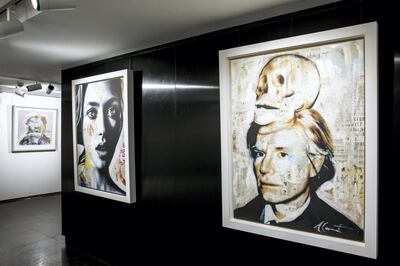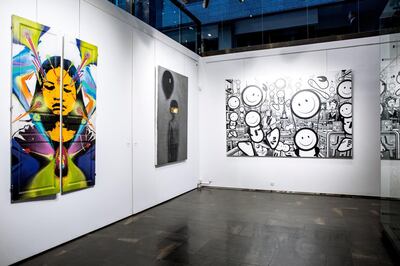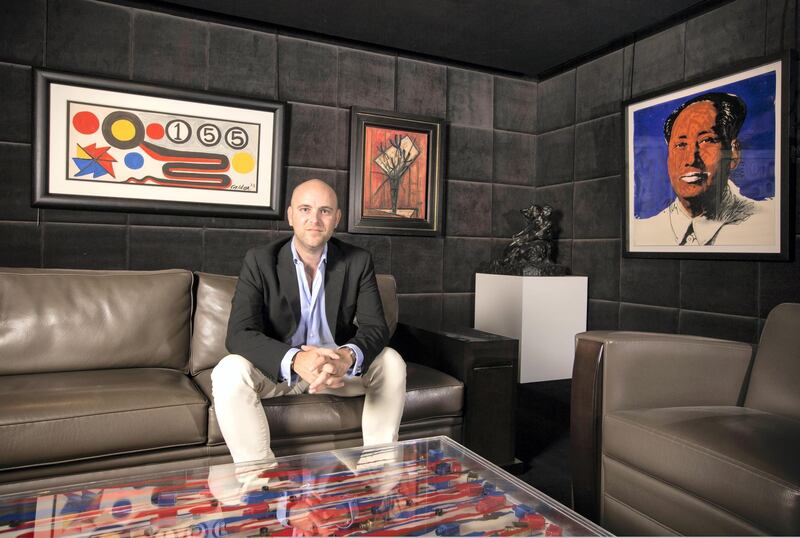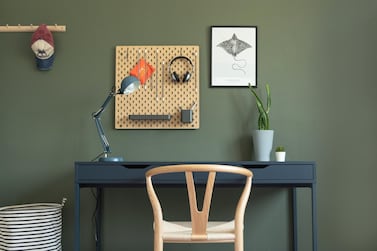The art world is a vast place to explore, so I always suggest people do as much research as possible before making their first acquisition. There are tonnes of online platforms to explore and galleries to visit. The key is to take your time and see as much as you can. At some stage, you are bound to find something that speaks to you.
The most common mistake we see is people trying to replicate somebody else's interior or collection, which often leads to lacklustre acquisitions and buyer's remorse. Remember to be selfish and true to yourself. After all, you are the one who will live with the paintings on a daily basis.
Once you've created your art "mood board", it's time to start the conversation with a gallery. Find a gallerist you trust and who understands your needs. Building a collection is all about planning and a good gallerist should be able to walk you through all the options.

But refrain from buying everything at the same time. Start with one or two “key” pieces for your house and get acquainted with them. Once you and your gallerist have a better idea of where things are going, add to your collection in increments.
Most importantly, trust your gut – if you fall in love with a painting, the chances are it will bring you joy on a daily basis.
In terms of curation, that's where the gallerist comes in again. This is your home and the final decisions are yours but a good gallerist will be able to give you sound advice and make sure the display retains some cohesiveness.
You also need to think in practical terms about placements. For example, you might want to refrain from putting valuable or fragile pieces in a high traffic area to minimise potential damage. With paintings in particular, you need to be careful about direct exposure to sunlight and the varying temperatures inside your home, especially in this region. Also, once you start buying artworks past a certain financial threshold, it's always encouraged to get insurance.

As for what to buy, it’s important to remember that out of the slew of available artists, the reality is that only a fraction of them will become successful, with the prices of their works eventually going up. Buying “blind” an up-and-coming artist who will later become a “market darling” carries the same odds as winning the lottery.
Artists from the turn of the 20th century are always going to be in demand from collectors and institutions, but we've seen a growing appetite for contemporary artists. The buying pattern has also gradually switched to the opposite ends of the spectrum: we are selling a higher number of cheaper pieces on one side, and more extremely expensive pieces on the other. Our typical seasoned collectors have switched from buying a couple of artworks per year in favour of a much more important acquisition. Given economic uncertainties, this pattern is understandable, as collectors are more inclined to allocate their funds towards tried and tested artists. There is also a renewed interest in European post-war abstract painters.
Regionally, art and art collecting is still relatively new and there is substantial potential for growth. Various initiatives and entities are supporting arts in the region, which ultimately translates into a spur of interest from the local population. For the time being, most of the demand for regional art is driven by the local market, which is pretty standard. As many more local artists become recognised, however, the demand will ultimately switch, attracting buyers from overseas.
Ultimately, what you choose to do and buy is up to you. The best advice I’ve ever been given is this: always meet the artist in person, visit the studio and never go above a strict price limit, which you should keep for an extended period of time.






